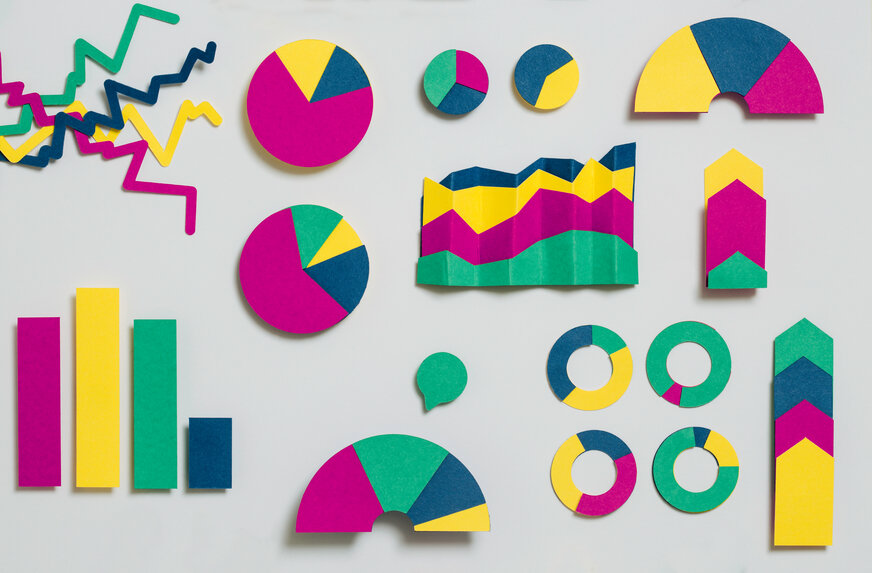A Quick Guide to Donor Data
There’s more to measuring your annual fundraising than how much money you raised. To get the full story, you've got to measure performance in terms of your donors as well.
Your donor data reveals critical information that you'll need in order to improve your fundraising and make the most of the giving potential within your database.
It tells you which donors are responding to your outreach and illuminates how well your strategies and tactics are working.
Your donor data reveals your best, most valuable donors.
One arts organization, while looking through their giving history, recently discovered a significant percentage of donors had been giving $250 per year for over 5 years. They decided a loyal donor recognition effort was in order. The following year they successfully "upgraded" many of those donors to a higher giving level.
Collecting, measuring, and interpreting your data helps you answer important questions like these:
Who is in your database? How many current, lapsed, and past donors do you actually have?
Did your new cultivation program for new donors actually make a difference?
Who are your best major donor or monthly giving prospects?
When do you stop spending money in an attempt to recruit prospects or renew lapsed donors?
For small nonprofits, it can be overwhelming to figure out where to start with donor data analysis, particularly when big consulting firms, targeting big nonprofits, throw out terms like, "predictive analytical modeling," and talk in terms of millions of dollars from gigantic donor databases.
Here's some good news: It's not as complicated as it sometimes sounds!
To get started, follow our user-friendly guide to understanding your donor data:
Step 1: Identify Your Most Important Segments
Begin by making a list of donor segments that are important to your organization.
These may include current, new, lapsed, multi-year, and prospective donors. Your organization may have special segments such as alumni, families of patients, former clients, etc… that you need to track.
Count and record the number of donors in each key segment you identified. (Hint: Keep your segment list minimal so that you don't get overwhelmed!)
Step 2: Calculate and Measure
Based on numbers from previous years, you’ll calculate the percentage of donors who renewed their giving this year. Calculate your overall retention rate as well as retention rates of your important segments listed in Step 1 (Here’s a step-by-step guide to help you calculate retention rates).
Calculate the percentage of each segment within your database. What percentage of your total database are current donors? Of those current donors, what percentage are first-time donors and what percentage are multi-year givers?
Step 3: Analyze
In this step, you’ll answer important questions about your donors and determine your strengths and weaknesses in terms of your annual fundraising.
For example, how does your overall donor retention compare to last year? What about retention of first-time donors compared to last year? (If you don’t have numbers from last year, don’t worry. You’ll be ready for next year!)
What do your current donor counts tell you? Do you have a ton of first-time donors in your database? Do you have substantially more recently lapsed donors than current or new donors? If so, you’ll need to develop strategies to keep them.
Step 4: Strategize
Based on the strengths and weaknesses you uncovered, create a plan for improvement. If you need to focus on lapsed donor renewal, you may want to plan a telephone campaign and a special mailing to those donors.
For example, perhaps your analysis uncovered 120 non-donor records in your database of people who participated in your community work day last year. A personal, meaningful appeal to this group might be a good idea. If you lost a lot of alumni support during the past year, you might consider hosting a local alumni celebration or hire current students to write a handwritten note thanking them for their past support.
Step 5: Document
Make sure to keep easy-to-access, well-organized records of all your calculations along with your observations and plan of action. Write down your goals and priorities so that you'll know just what to measure at next year's donor analysis time.
Step 6: Next year… repeat!
---
While this process may be simple, it isn't exactly fast! There’s a good amount of up-front work needed to get your system off the ground. But once you’ve gone through this initial set-up, you’ll have a simple data analysis system to follow each year. With this under your belt, it will be a breeze to add other data points and become a data-driven nonprofit!

